Although we do not mean it to, giving material assistance to people puts them at a disadvantage; they “owe” us something they likely will never repay. The fear of indebtedness often makes asking for help more difficult. Even when we are in very dire straits, we don’t want to impose, we don’t want to be burdens, and we don’t want to be indebted.
Yet on nearly every home visit, we meet a neighbor with a light bill, rent, or other need, and not enough money to pay for it. The math is simple; what else can we do?
“Help honors,” Blessed Frédéric taught, “when it may become mutual.” [O’Meara, 229] He went on to explain that this means offering not only material help, but a kind word, a handshake, some encouragement – all those things that we may one day need, as well.
As our Rule puts it, “Vincentians should never forget that giving love, talents and time is more important than giving money.” [Rule, Part I, 3.14] Or, as Blessed Rosalie Rendu put it, “They will appreciate your kindness and your love more than all else you can bring them.” [Apostle in a Top Hat, 57]
How many times can we hear “you are the only ones who called me back” before we realize that this personal connection is the whole point?
In other words, a home visit is not a math problem. It is the beginning of a “relationship based on trust and friendship.” [Rule, Part I, 1.9] This is why we don’t visit “clients.” There is nothing mutual in a relationship with a client; it does not “honor.”
It is good to use the right words, but using the words is not enough. After all, in the Parable of the Good Samaritan, Christ did not ask us simply to call each other neighbors, but to be neighbors, and to love our neighbors as ourselves.
To have a neighbor, you have to be a neighbor. To have a friend, you have to be a friend. To have a brother or sister, you have to be a brother or sister. Our brothers, sisters, neighbors, and friends don’t owe us a dime. They repay us fully with their handshakes, their prayers, and their friendship.
And for those things, we are all neighbors in need.
Contemplate
How can I become a better friend?
Recommended Reading
Mystic of Charity – especially 6. Home Visits in the Vincentian Tradition

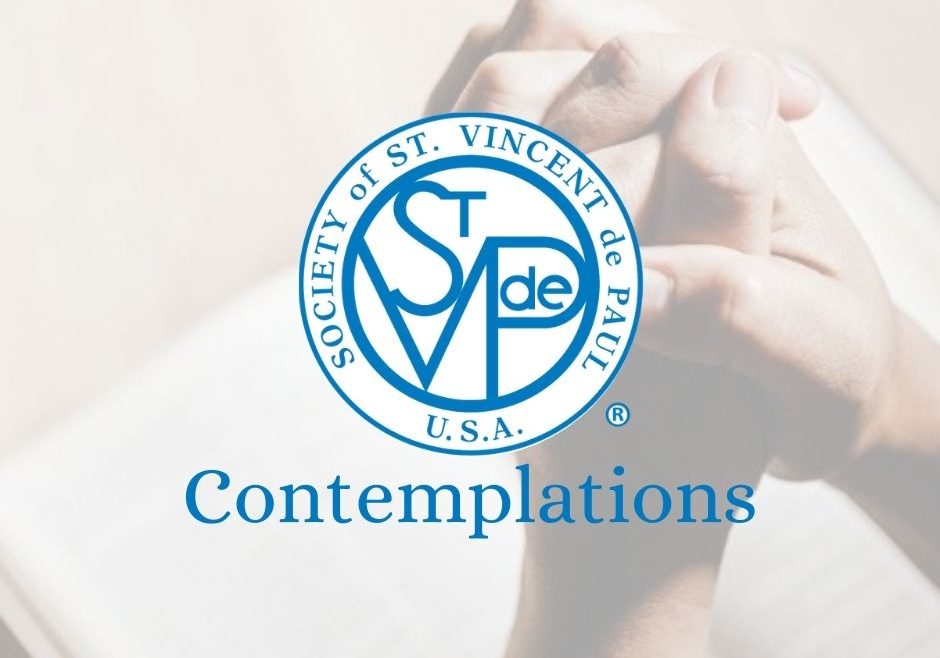
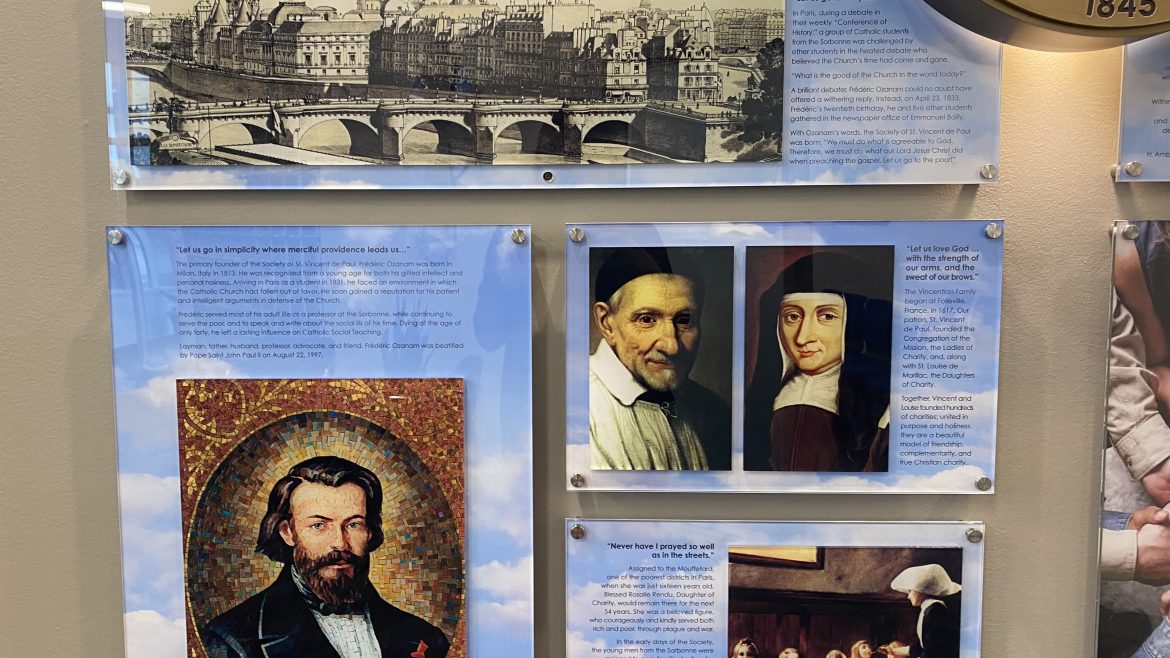
 Two weeks ago, Society of St. Vincent de Paul leadership from across the country gathered again for the first time in more than a year. Their primary purpose was Board and Strategic Planning meetings, though they had another reason to gather as well: to witness the dedication of the National Council’s new headquarters at 66 Progress Parkway in Maryland Heights, Missouri.
Two weeks ago, Society of St. Vincent de Paul leadership from across the country gathered again for the first time in more than a year. Their primary purpose was Board and Strategic Planning meetings, though they had another reason to gather as well: to witness the dedication of the National Council’s new headquarters at 66 Progress Parkway in Maryland Heights, Missouri.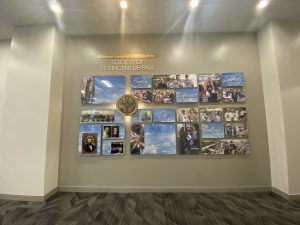
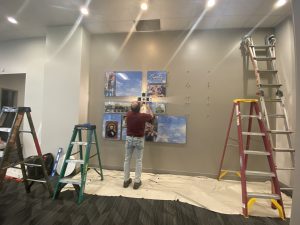
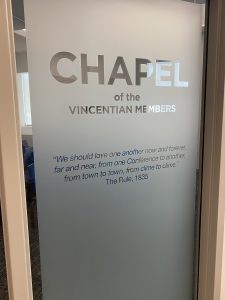 The Chapel of Vincentian Members
The Chapel of Vincentian Members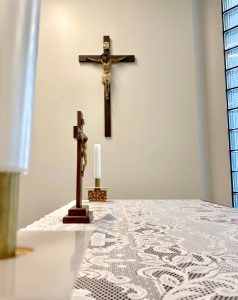 The balance of past and present flows from the History Wall into the Chapel as well. While the altar is a new piece, the Stations of the Cross, crucifix, and seating came from the Archdiocese of St. Louis’
The balance of past and present flows from the History Wall into the Chapel as well. While the altar is a new piece, the Stations of the Cross, crucifix, and seating came from the Archdiocese of St. Louis’ 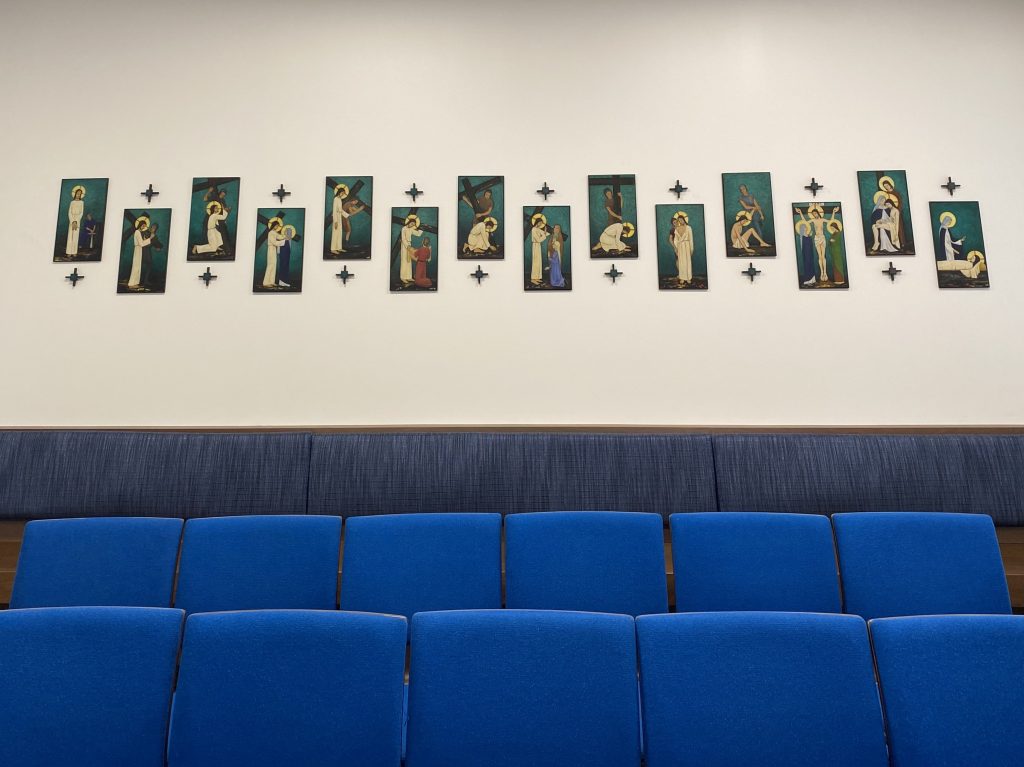 The space is filled with natural light coming from glass bricks off the building’s V-shaped entryway (which predates our occupancy), and the new altar has a V-shaped base whose shape mimics old glass wall. The overall feeling is one of serenity and harmony.
The space is filled with natural light coming from glass bricks off the building’s V-shaped entryway (which predates our occupancy), and the new altar has a V-shaped base whose shape mimics old glass wall. The overall feeling is one of serenity and harmony.
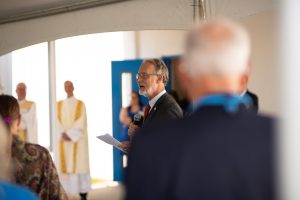
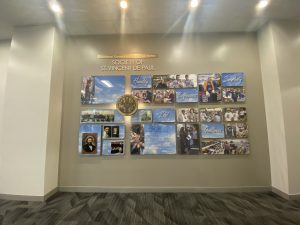
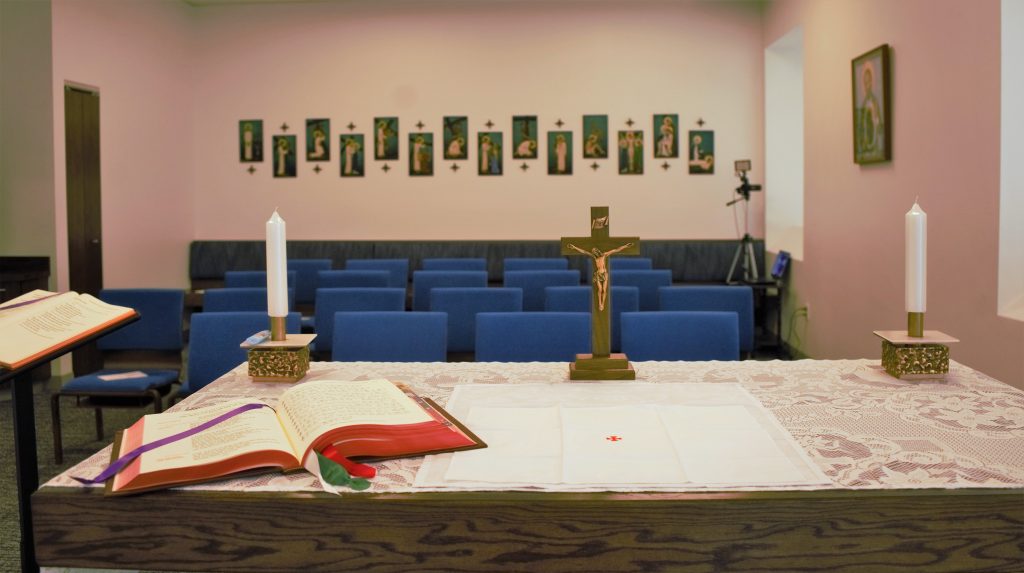
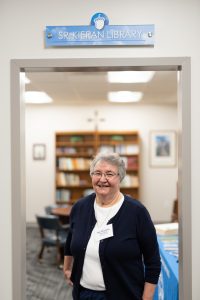 True to the Vincentian value of prudence, the National Council did not use any dollars from member services to purchase the new building, which was funded through the sale of our old building and judicious savings of bequest funds over time. “Our most loyal donors contributed mightily to this day. We thank them,” Middlecamp said.
True to the Vincentian value of prudence, the National Council did not use any dollars from member services to purchase the new building, which was funded through the sale of our old building and judicious savings of bequest funds over time. “Our most loyal donors contributed mightily to this day. We thank them,” Middlecamp said.